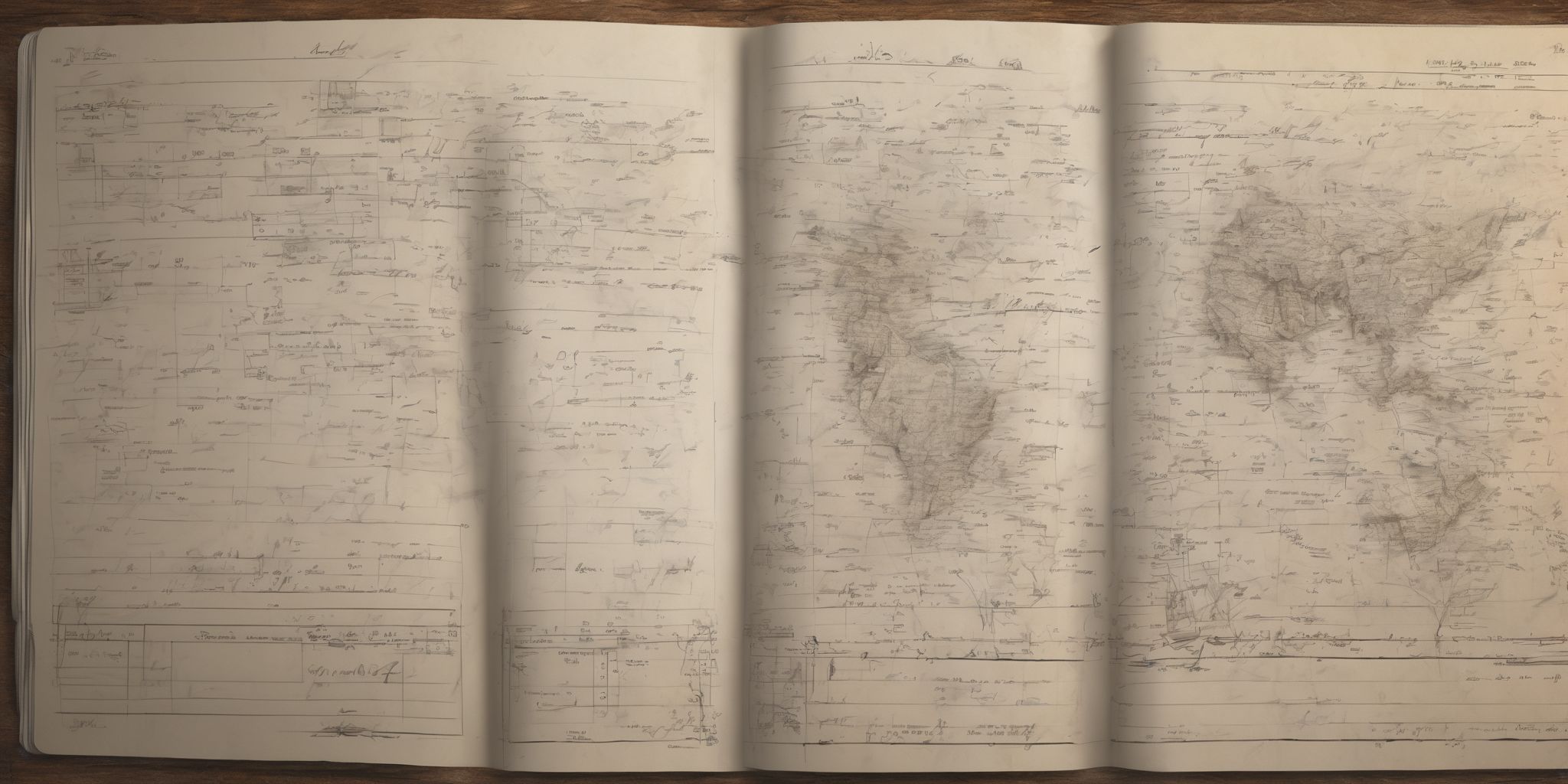Simplify Your Expense Reporting with an Expenses Report Template
Are you tired of drowning in a sea of receipts and Excel spreadsheets every time you need to report your expenses? We feel your pain. Expense reporting can be a daunting task, but fear not! We have the solution to make your life easier and your expense reporting a breeze. Introducing the Expenses Report Template – your new best friend when it comes to simplifying and streamlining your expense reporting process.
Say goodbye to the days of manual data entry and hours spent organizing receipts; with this template, you'll be able to report your expenses efficiently without breaking a sweat. So, let's dive in and discover how this template can revolutionize your expense reporting game.
What is an expense report?
An expense report is a document that helps individuals or businesses track and record their expenses. It serves as a record of all the money spent on various items or services related to business operations. Expense reports typically include details such as expense categories, itemized entries, dates, and receipts. Using an expenses report template can simplify the process by providing a pre-designed structure and format for recording expenses.
This allows users to easily input and organize their expenses, ensuring accuracy and consistency. With an expenses report template, individuals and businesses can effectively monitor their spending, identify areas of improvement, and make informed financial decisions.
Why use an expense report template?
Why use an expenses report template?
- Simplifies the expense reporting process by providing a structured format for recording and categorizing expenses.
- Ensures consistency and accuracy in expense tracking, reducing the risk of errors or omissions.
- Facilitates easy retrieval and analysis of expense data, enabling better financial decision-making.
- Saves time and effort by eliminating the need to create a report from scratch for every expense.
- Provides a standardized admin templates that can be used by multiple employees or across different departments.
- Makes it easier to comply with accounting and tax regulations by organizing expenses in a clear and organized manner.
Benefits of using an expenses report template
Streamlined expense tracking
Expenses report templates streamline expense tracking by providing a structured format for recording and categorizing expenses. With a template, you can easily input details such as the date, amount, and purpose of each expense, ensuring accuracy and consistency. Some templates even allow for attaching digital receipts. This simplifies the process of tracking and reconciling expenditures, leading to better financial management and decision-making.
For example, you can quickly generate expense reports for specific periods or expense categories, easily identifying areas where spending can be optimized.
Time-saving automation
Time-saving automation is a significant advantage of using an expenses report template. With automation, manual tasks like data entry and calculations are minimized, increasing efficiency.
For example, by inputting expense details such as dates and amounts into the template, the calculations for total expenses can be automatically generated. This eliminates the need for manual computation, saving time and reducing the chances of errors.
Additionally, some templates can integrate with expense tracking tools or accounting software, further streamlining the process. By leveraging automation, employees can spend less time on administrative tasks and focus more on higher-value responsibilities.
Key components of an expenses report template
Expense categories
Expense categories are an integral part of any expenses report template. They help organize and classify different types of expenses incurred by individuals or businesses. By grouping expenses into categories like travel, meals, or office supplies, it becomes easier to track and analyze spending patterns. This not only provides a clear overview of where the money is being spent but also helps identify areas where cost optimization is possible.
Itemized expense entries
- Itemized expense entries are an integral part of an expenses report template.
- They provide a detailed breakdown of individual expenses incurred during a specific period, allowing for accurate tracking and analysis.
- Each itemized entry should include information such as the expense description, amount, date, and related project or department.
- By recording expenses in a granular manner, businesses gain clarity on spending patterns, identify cost-saving opportunities, and ensure compliance with financial regulations.
- For example, itemized expense entries could capture costs for business travel, office supplies, client entertainment, or software subscriptions.
- These entries enable a comprehensive overview of expenditures, facilitating budget planning, and decision-making based on real-time data.
Date and purpose of expenses
Accurately documenting the date and purpose of each expense is a fundamental aspect of an expenses report template. The date helps track timely submissions and enables efficient auditing.
Additionally, including the purpose of each expense provides crucial context for decision-makers reviewing the report. For instance, noting that a meal expense was incurred during a business meeting establishes its relevance and justifies its inclusion. Without clear documentation of the date and purpose, expense reports lack transparency and may lead to confusion or delays in processing. By diligently recording this information, businesses can ensure financial accountability and improve the overall reliability of their expense reporting process.
Receipt attachments
Receipt attachments provide tangible evidence of expenses and play a vital role in an expenses report template. Including scanned or digital copies of receipts helps validate the legitimacy of expenses and ensures compliance with financial regulations. It allows for easy verification and auditing processes, saving time and effort.
Additionally, attaching receipts helps in accurately categorizing and tracking expenses, providing a clear overview of spending patterns.
For example, attaching a receipt for a business meal allows the finance team to differentiate between personal and company expenses. Utilizing receipt attachments in your expenses report template enhances transparency and accountability in managing financial records.
Using an expenses report template in practice
Choosing the right template for your needs
When choosing an expenses report template, consider the specific needs of your organization. Look for a template that aligns with your expense reporting requirements and existing financial systems. A customizable template allows you to tailor it to your company's unique structure and expense categories.
Additionally, opt for a template that offers clear and intuitive formatting, making it easy for employees to enter and categorize expenses accurately. Seek a template that can handle various types of expenses, such as travel, meals, or supplies. Remember, a well-suited template will simplify the expense reporting process and improve overall efficiency.
Customizing the template to fit your company's requirements
Customizing the expenses report template is important to align it with your company's specific needs and processes. Start by adding custom expense categories that reflect your organization's unique expenses. You can also include fields for additional information like project codes or client names. Consider incorporating your company's branding by adding a logo or color scheme to the template.
Additionally, adapt the template's layout to match your preferred format for easy readability. By tailoring the expenses report template, you can ensure it accurately captures and organizes the information necessary for your company's financial tracking and reporting needs.
Training employees on using the template
Training employees on using the expenses report template is crucial for its effective implementation. Here are some practical tips to ensure a smooth transition:
- Conduct training sessions or workshops to familiarize employees with the template's features and functionalities.
- Provide step-by-step guides or video tutorials for easy reference.
- Encourage hands-on practice to build confidence and proficiency.
- Assign experienced employees as mentors to provide support and address any questions or challenges.
- Offer ongoing support and follow-up sessions to reinforce learning and address any additional training needs.
By investing in proper training, employees can quickly adapt to the expenses report template, leading to improved accuracy and efficiency in expense reporting processes.
Popular expenses report templates and tools
Template examples from popular accounting software
When it comes to expenses report templates, popular accounting software offers a range of options. These templates provide a structured format for recording and organizing expenses, making the report creation process more efficient. With these templates, you can easily input expense details, categorize them, attach receipts, and calculate totals.
One example of such a template is a pre-designed spreadsheet with predefined expense categories and formulas for automatic calculations. Alternatively, accounting software may provide customizable templates that allow you to tailor the layout and fields to fit your specific reporting needs. These templates can be a valuable resource for simplifying expense reporting and ensuring accuracy in financial tracking.
Apps and tools for mobile expense reporting
Apps and tools for mobile expense reporting are becoming increasingly popular among businesses. These tools provide convenience and flexibility for employees to submit their expenses on the go. With these applications, employees can easily capture receipts, categorize expenses, and track mileage right from their mobile devices.
Additionally, these tools often integrate with accounting software, simplifying the process of transferring data to expense reports. By using mobile expense reporting apps, businesses can improve efficiency in expense management and minimize the risk of lost or misplaced receipts.
Final thoughts
Managing and reporting expenses can be a tedious and time-consuming task. However, using an expenses report template can simplify this process significantly. A template provides a structured format that allows you to conveniently input your expenses and their relevant details. By utilizing an expenses report template, you can easily track your expenditures, categorize them, and calculate totals.
This helps to streamline the expense reporting process, saving you time and reducing the chances of errors. With a template, you can quickly generate professional-looking reports that are easily understood by stakeholders, making expense management a breeze.


